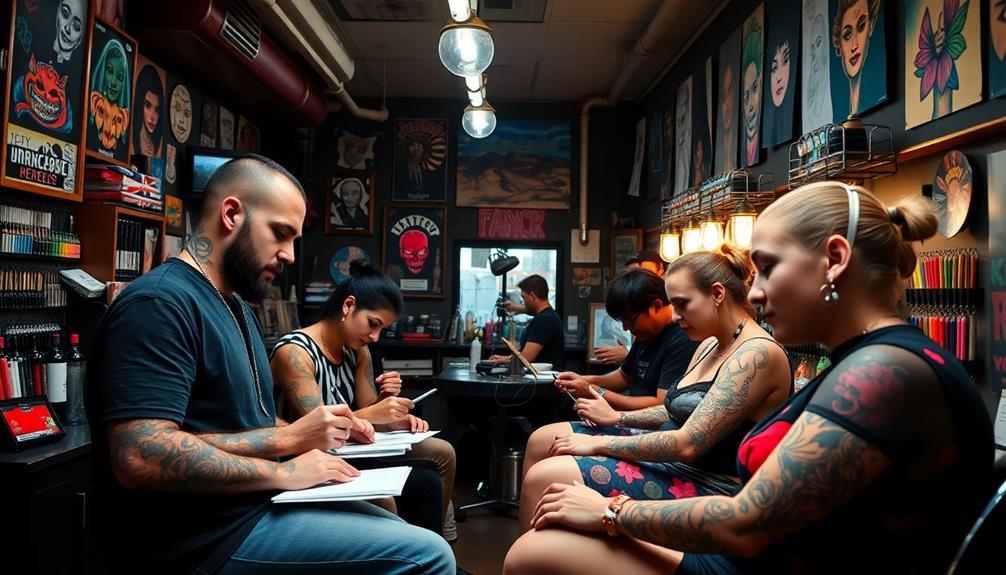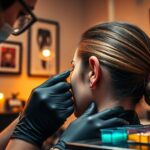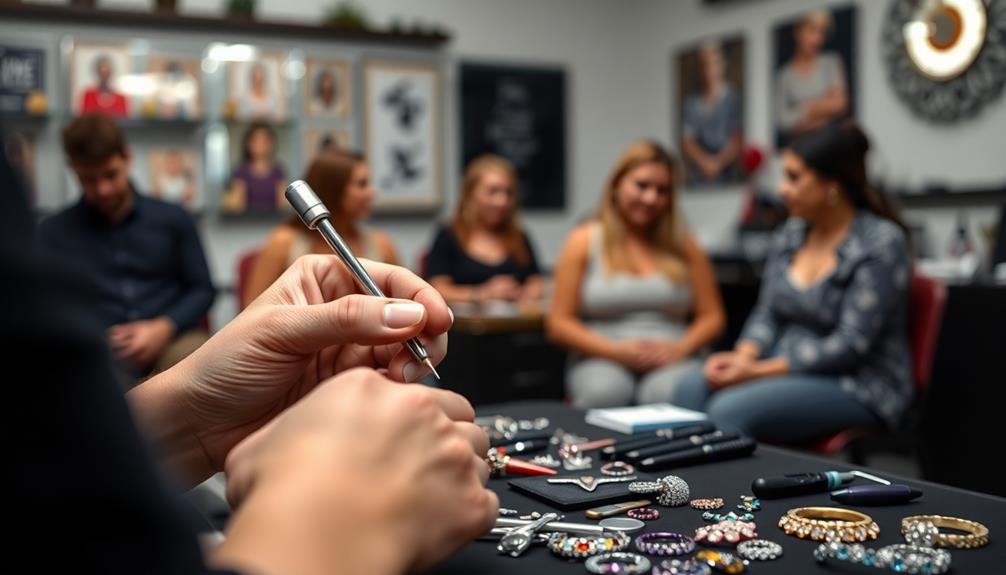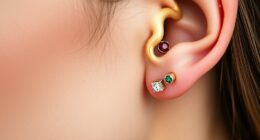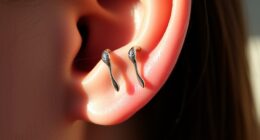To run a successful piercing studio, you need a solid business plan that outlines your target market and compliance with licenses. Initial costs can range from $5,000 to $10,000, so careful budgeting is vital. Invest in high-quality equipment and guarantee you follow strict safety protocols. Marketing through social media is key for visibility, while excellent customer service enhances client loyalty. A welcoming atmosphere and personalized experiences are essential for retaining customers. Keeping an eye on your cash flow and ongoing expenses will help maintain profitability. Discovering more about these strategies can make all the difference in your studio's success.
Key Takeaways
- A solid business plan is crucial for guiding operations and growth, addressing market research, and defining target demographics.
- Initial setup costs typically range from $5,000 to $10,000, covering equipment, supplies, and necessary licenses.
- Pricing strategies should align with location and competition, with typical service prices ranging from $50 to $200.
- Effective marketing through social media and community events can enhance brand visibility and customer engagement.
- Financial management, including cash flow strategies, is essential to maintain profitability and avoid financial pitfalls.
Business Planning Essentials
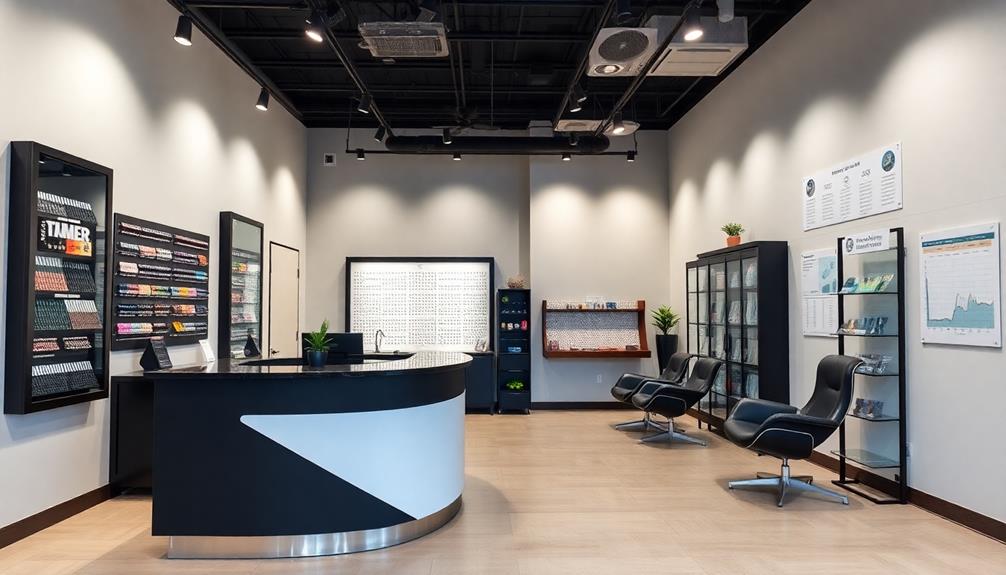
When you're starting a piercing studio, you can't overlook the importance of having a solid business plan in place. This document will detail your goals, strategies, and financial projections, guiding your operations and growth.
First, conduct thorough market research to identify your target demographic. Did you know that 10% of UK adults have body piercings? Focus especially on the 50% of females aged 16-24, as they represent a notable market.
Your business plan should also address necessary licenses and permits. These legal requirements are essential for compliance and mitigating risks, including liability agreements for clients.
Additionally, consider the initial setup costs, which encompass equipment, supplies, and ongoing expenses. Typical service pricing ranges from $50 to $200, so make certain your financial projections align with your budget.
Choosing a location that's strategic—based on foot traffic and competition—can greatly impact your customer acquisition.
Equipment and Safety Protocols
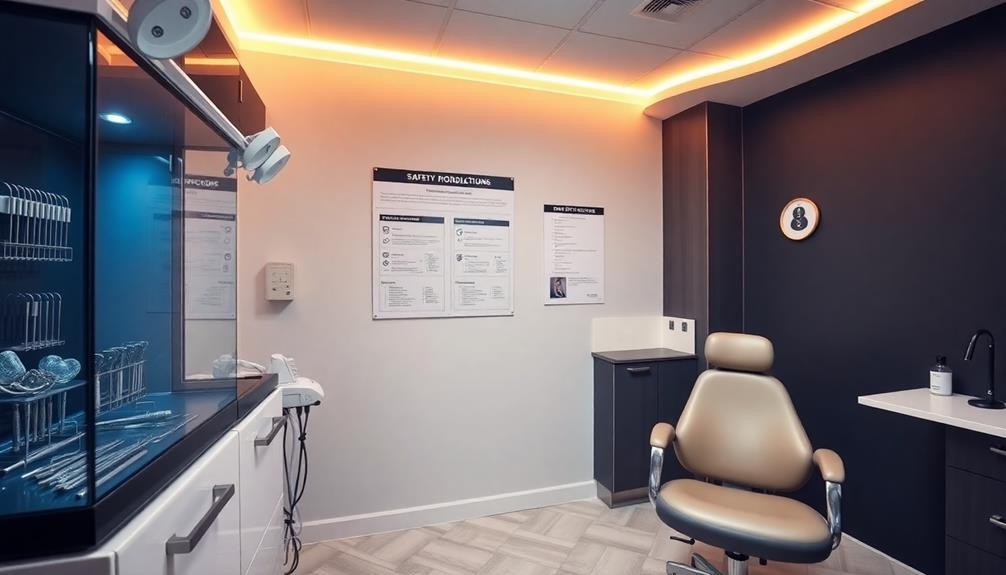
A piercing studio's success hinges on having the right equipment and strict safety protocols in place. Important equipment includes sterilized needles, forceps, receiving tubes, and dermal punches, with needle sizes ranging from 4 gauge to 22 gauge to accommodate various body piercings. Investing in quality equipment not only enhances your studio's reputation but also guarantees safety during the piercing process.
An autoclave is essential for sterilizing tools, helping you comply with health regulations and maintain a safe environment. Proper safety protocols, like wearing latex gloves, using alcohol wipes for skin preparation, and providing sharps disposal containers for used needles, are critical for infection prevention.
You should prioritize regular health inspections and strictly adhere to local health regulations to confirm your studio operates legally and efficiently. Maintaining a clean and organized setup, including instrument trays and a well-stocked first aid kit, is important for providing a safe experience for both piercers and clients.
Marketing Strategies for Growth
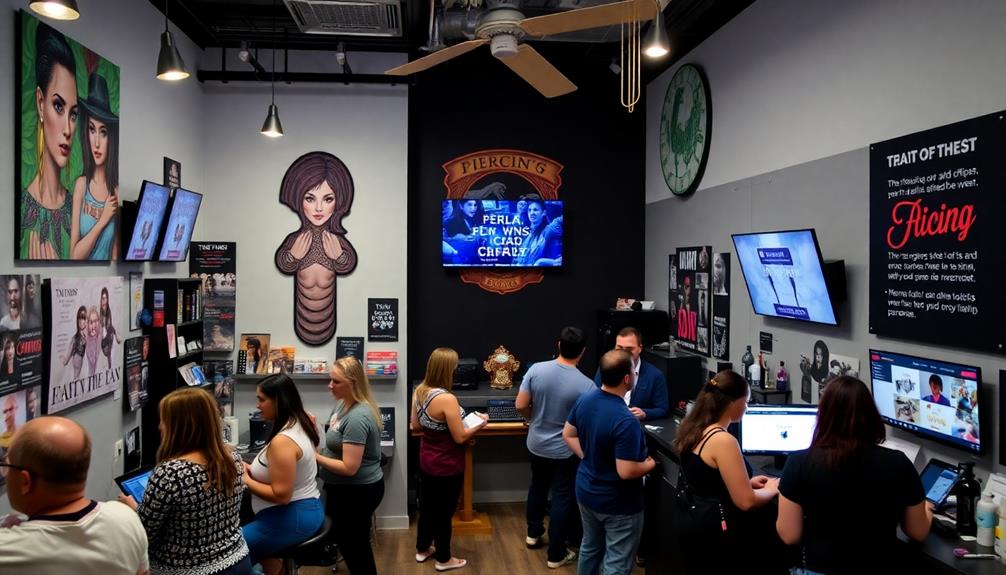
Effective marketing strategies are vital for a piercing studio's growth and visibility in a competitive market. To stand out in the body piercing studios sector, leverage social media platforms like Instagram and TikTok. With 71% of consumers more likely to purchase from brands they follow, creating engaging content can elevate your brand identity.
Additionally, nurturing meaningful connections with clients through personalized experiences can enhance customer loyalty and retention.
Hosting local events, such as piercing parties or artist collaborations, fosters community engagement and attracts new clients, making it essential for repeat business.
Don't underestimate the power of customer reviews; 84% of people trust online reviews as much as personal recommendations. Incorporate testimonials into your marketing materials to build reputation and trust in the piercing market.
Implementing targeted promotions, like discounts for first-time customers or referral bonuses, can markedly boost new client acquisition and encourage word-of-mouth marketing.
Finally, developing a unique brand identity through distinctive studio aesthetics and personalized client experiences will differentiate your studio in a crowded landscape.
Customer Experience and Engagement
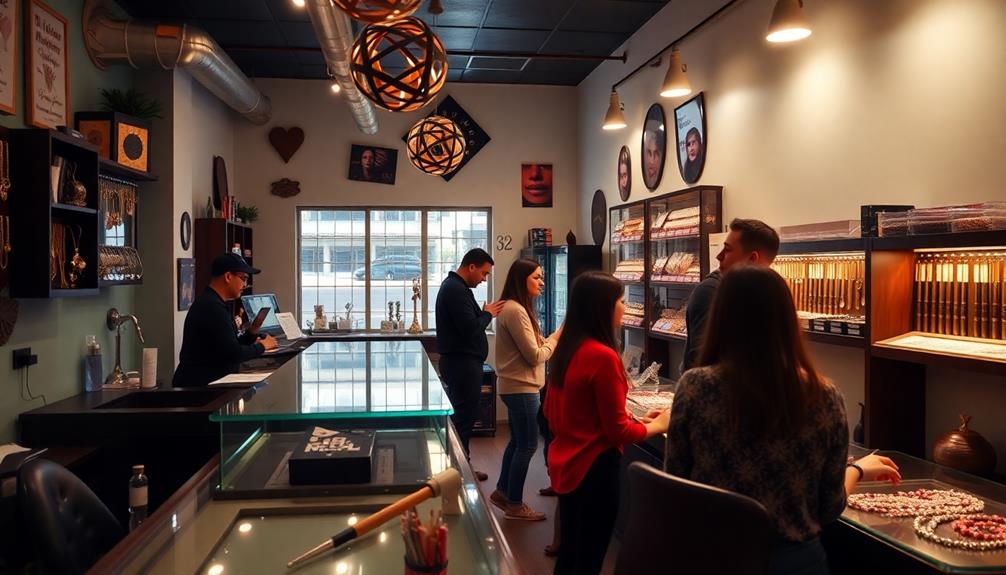
Creating an exceptional customer experience is essential for the success of your piercing studio. A welcoming atmosphere can greatly boost client satisfaction; studies show that 70% of clients prefer friendly and inclusive environments. Engaging clients through personalized consultations allows you, as a body piercer, to address individual preferences and concerns, fostering stronger connections and encouraging repeat business.
To further enhance customer experience, focus on the following key areas:
| Focus Area | Importance | Action Steps |
|---|---|---|
| Customer Service | 80% of consumers stop business due to poor service | Train staff regularly |
| Aftercare Instructions | Builds client confidence | Provide verbal and written instructions |
| Client Engagement | Higher retention rates | Develop loyalty programs |
| Atmosphere | Friendly environments boost satisfaction | Create an inviting space |
| Personalized Consultations | Strengthens client relationships | Spend time on individual needs |
Financial Management and Pricing
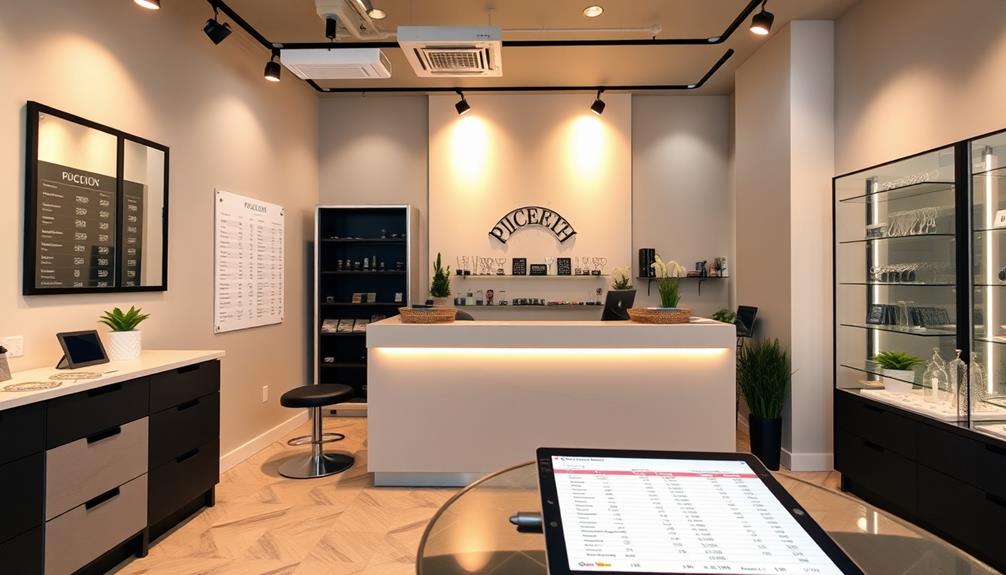
Managing finances in your piercing studio isn't just about crunching numbers; it's the backbone of your business's success. Effective financial management guarantees you cover initial costs, which can range from $5,000 to $10,000 for equipment, licenses, and supplies.
When setting your pricing, consider factors like location and competition; typical piercing services range from $50 to $200. Ongoing expenses, such as rent and staff wages, can heavily impact your profitability, making careful budgeting fundamental for sustainability.
You'll need to establish a solid cash flow management strategy to avoid potential pitfalls. Regular financial reviews will help you pinpoint issues and develop solutions to enhance revenue growth.
Investing in high-quality equipment is essential since the materials you use greatly affect your studio's reputation and profitability. Jewelry and piercing supplies often take up a substantial portion of your budget, so it's important to implement effective inventory management and cost-effective sourcing strategies.
Frequently Asked Questions
Where Do Piercers Make the Most Money?
You'll find piercers making the most money in urban areas, where demand's high. Busy studios can charge premium prices, and upselling aftercare products boosts income considerably, leading to greater earnings per client.
Do Piercers Make Money?
You might wonder if piercers make money. The truth is, they can earn a decent income, especially with commissions from jewelry sales and busy schedules, allowing them to boost their earnings considerably through multiple procedures each day.
How to Promote a Piercing Business?
To promote your piercing business, leverage social media for eye-catching visuals, collaborate with local influencers, create referral programs, share educational content, and run limited-time promotions during peak seasons to attract and retain clients.
How Do I Open My Own Piercing Business?
To open your own piercing business, start by researching local demand and competitors. Create a solid business plan, guarantee compliance with regulations, invest in quality equipment, and build a strong brand presence to attract clients.
Conclusion
Running a successful piercing studio isn't just about the art of body modification; it's about smart planning and savvy decisions. Just like a perfectly placed piercing, your business needs precision and care. By focusing on your customers, investing in quality equipment, and implementing effective marketing strategies, you can create an experience that keeps clients coming back. Remember, success often hinges on those unexpected moments—like a chance encounter leading to a new loyal customer. Seize those coincidences!
Hi, my name is Danielle, and I’m an author for piercings-body.com. I have a passion for writing and love to share my knowledge on all things body piercing-related. I’m also a huge advocate for safe body modification practices and believe everyone should be able to make informed decisions about their bodies. When I’m not writing or blogging, I enjoy spending time with my family and friends, practicing yoga, and exploring new places.


